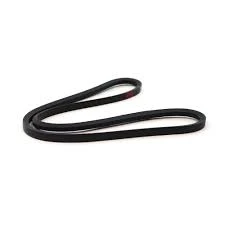- Arabic
- French
- Russian
- Spanish
- Portuguese
- Turkish
- Armenian
- English
- Albanian
- Amharic
- Azerbaijani
- Basque
- Belarusian
- Bengali
- Bosnian
- Bulgarian
- Catalan
- Cebuano
- Corsican
- Croatian
- Czech
- Danish
- Dutch
- Afrikaans
- Esperanto
- Estonian
- Finnish
- Frisian
- Galician
- Georgian
- German
- Greek
- Gujarati
- Haitian Creole
- hausa
- hawaiian
- Hebrew
- Hindi
- Miao
- Hungarian
- Icelandic
- igbo
- Indonesian
- irish
- Italian
- Japanese
- Javanese
- Kannada
- kazakh
- Khmer
- Rwandese
- Korean
- Kurdish
- Kyrgyz
- Lao
- Latin
- Latvian
- Lithuanian
- Luxembourgish
- Macedonian
- Malgashi
- Malay
- Malayalam
- Maltese
- Maori
- Marathi
- Mongolian
- Myanmar
- Nepali
- Norwegian
- Norwegian
- Occitan
- Pashto
- Persian
- Polish
- Punjabi
- Romanian
- Samoan
- Scottish Gaelic
- Serbian
- Sesotho
- Shona
- Sindhi
- Sinhala
- Slovak
- Slovenian
- Somali
- Sundanese
- Swahili
- Swedish
- Tagalog
- Tajik
- Tamil
- Tatar
- Telugu
- Thai
- Turkmen
- Ukrainian
- Urdu
- Uighur
- Uzbek
- Vietnamese
- Welsh
- Bantu
- Yiddish
- Yoruba
- Zulu
set. . 06, 2024 03:28 Back to list
High-Quality Ribbed Belts | Durable V-Ribbed Belts for Reliable Performance
Understanding the V-Ribbed Belt Mechanism, Importance, and Maintenance
The v-ribbed belt, also known as a ribbed belt or serpentine belt, is an essential component in the mechanical operations of modern vehicles. It is designed to efficiently transfer motion between the crankshaft and various accessories such as the alternator, power steering pump, water pump, and air conditioning compressor. This article delves into the working mechanism, significance, and proper maintenance of the v-ribbed belt.
Mechanism and Design
The design of the v-ribbed belt is characterized by its ribbed surface, which enhances its grip on the pulleys. Unlike traditional flat belts, the ribbed belt's cross-section is wider and features multiple grooves that conform to the contours of the pulleys. This design allows for a higher power transfer efficiency and a more secure grip, which reduces slipping and enhances the overall performance of the vehicle.
When the engine runs, the crankshaft's rotation drives the v-ribbed belt. This belt, in turn, drives multiple components simultaneously. The arrangement allows for a compact installation and reduces the number of belts required in a vehicle, simplifying the design and reducing potential failure points.
Understanding the V-Ribbed Belt Mechanism, Importance, and Maintenance
The v-ribbed belt plays a critical role in maintaining the vehicle’s functionality. A well-functioning belt ensures that all accessories operate correctly, which is vital for the vehicle's overall performance. For instance, a failing v-ribbed belt may lead to the alternator not charging the battery properly, diminished engine cooling due to water pump failure, and compromised steering assistance from the power steering pump.
ribbed belt\/v-ribbed belt

Moreover, the v-ribbed belt’s efficiency can directly affect fuel consumption. When the belt slips or fails, the engine may have to work harder, leading to increased fuel consumption and emissions. Therefore, maintaining a healthy v-ribbed belt is not just about vehicle performance; it also contributes to environmental sustainability.
Maintenance Tips
Regular inspection and maintenance of the v-ribbed belt are crucial for ensuring its longevity and effectiveness. Vehicle owners should be aware of warning signs such as unusual sounds (like squeaking or chirping), visual cracks or fraying on the belt surface, and decreased performance in powered accessories. Generally, a v-ribbed belt should be replaced every 60,000 to 100,000 miles, although this can vary depending on the vehicle manufacturer’s recommendations.
To maintain the belt's perfect condition, ensure that the pulley alignment is correct and check for proper tension. Most modern vehicles have tensioning devices that automatically adjust the belt's tension, but they should still be inspected for wear and proper functioning.
Conclusion
In conclusion, the v-ribbed belt is a pivotal component in a vehicle’s engine system, linking various essential accessories and ensuring smooth operation. Understanding its mechanism, importance, and maintenance can help vehicle owners prolong its life and enhance their cars' overall efficiency. Regular monitoring and timely replacements will not only prevent costly repairs but also ensure optimal performance and fuel efficiency, making it an integral aspect of vehicle care.
-
Korean Auto Parts Timing Belt 24312-37500 For Hyundai/Kia
NewsMar.07,2025
-
7PK2300 90916-T2024 RIBBED BELT POLY V BELT PK BELT
NewsMar.07,2025
-
Chinese Auto Belt Factory 310-2M-22 For BMW/Mercedes-Benz
NewsMar.07,2025
-
Chinese Auto Belt Factory 310-2M-22 For BMW/Mercedes-Benz
NewsMar.07,2025
-
90916-02660 PK Belt 6PK1680 For Toyota
NewsMar.07,2025
-
drive belt serpentine belt
NewsMar.07,2025

